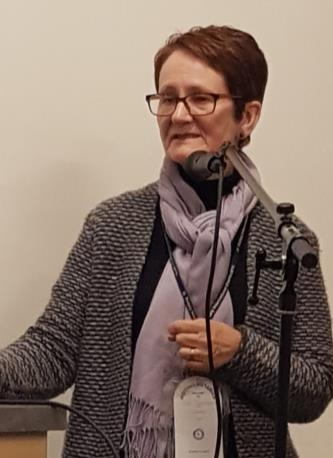The Amazing Work of the Pacific Leprosy Foundation

Jill Tomlinson, General Manager for the Pacific Leprosy Foundation (PLF), gave us an insightful talk on the myths and realities of leprosy in the modern world.
The PLF began by providing support for leprosy sufferers who had been quarantined on Quail Island and has been in existence for approximately 80 years. In addition to identification, support and treatment, a strong focus is currently focussed on eradication with a catch phrase being: “Leprosy – it’s time to think again.”
So what is the current situation? Last year there were a ¼ of a million new cases word wide. Leprosy is a leading cause of disability with numbers increasing in some countries.
It is also present in New Zealand with 4-5 new cases per annum for mostly new arrivals. So… what does leprosy look like?
Jill shared that it is one of the oldest known diseases and has typically been stereotyped as resulting in disfigurement and deformity over the ages. It is, however, curable and deformity is not inevitable.
The key, shared Jill, is early diagnosis and treatment but what often gets in the way is that many sufferers do not seek help because of the stigma attached to the diagnosis.
Leprosy is a bacterial disease and is usually caught by coughing or sneezing. Compared to other afflictions like the common cold, however, it is much harder to catch. 95% of us already have immunity. For these reasons it is considered a good bet for total eradication in especially the Pacific region.
The incubation period is 3-5 years with early diagnosis being critical. As a result of being so slow growing this makes it difficult to develop a vaccination, Jill explained, and hence why it is still a significant challenge.
As it progresses if affect the skin and nerves. This often starts with a small patch on the skin which is often missed or ignored. It is also more prevalent in impoverished scenarios which add to the challenge it presents.
The Pacific area in particular has leprosy present with an increasing number of those catching it being in part due to lower income levels and standards of living in particular.
So what is the PLF doi9ng?
“We work in many Pacific countries and have welfare programmes in all of them” Jill explained with some if the key aims being prevention and control. They also assist those already affected by it which includes helping those with resulting disabilities and social challenges as a result of the stigma.
With respect to control, the PLF is the only organisation addressing this in the Pacific with a particular emphasis being in Samoa and Kiribati.
In Samoa, which has a population of approximately 200,000, there are 15-20 cases diagnosed a year. The PLF partners with the Ministry of Health and is targeting eradication in ten years.
This involves treating not only those diagnosed with leprosy but also all those people who are in close contact with them which can be a challenge as some families have up to 35 members. Treatment success rates are currently 60-70%.
Kiribati faced additional challenges which include rising sea levels as a result of global warming. The main town has 18,000 residents that are squeezed into 1 ¼ square kilometres. That equates to ~ 15,000 per km compared to 600 per km in Christchurch which makes it one of the most densely populated places in the world.
The approach taken there, Jill explained, is to work in teams which include doctors (mostly from Christchurch) and having a strong focus on eradication which includes raising awareness as well as treatment. The teams run advanced skin clinics which includes assessment by dermatologists. It is often quite hectic with hundreds of locals being triaged, assessed and treated each day.
A new initiative is to also ID all past contacts and the team is assisted here by local health staff as, given the crowding, it is possible that almost everyone might be affected Jill explained. Resistance to antibiotics is also a key strategy here.
In addition to identification and treatment, the PLF also supports those affected with rehabilitation. This includes support with wheel chairs, prosthetics and housing plus upskilling those wanting to seek income while also assisting with welfare support for families and their children.
What can we do?
Jill suggested that we tell friends who we are, don’t fear it, “Like” the Foundation on Facebook, take a brochure, and join their mailing list.
In finishing, Jill shared a strange fact … the only other animal that can contract leprosy is the armadillo.
We thanked Jill for her informative talk and wish her well in the Foundations goal of total eradication.